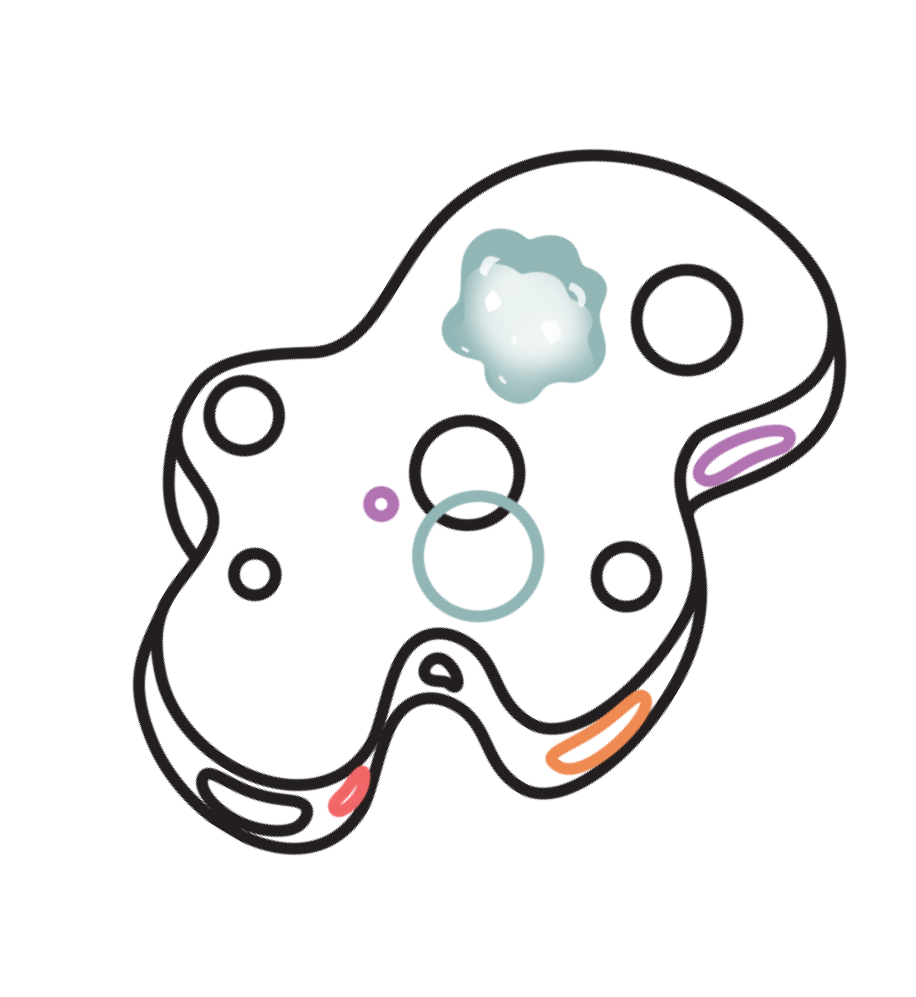What is Meditation?
Meditation is the formal act of mindfulness. Mindfulness is awareness that arises through paying attention, on purpose, in the present moment, non-judgmentally.
Thus your idea space—all your thoughts, emotions, sensations, and perceptions—becomes your object of meditation. As an Ancient once said,
"In the seeing, there is only the seen. In the hearing, there is only the heard. In the sensing, there is only the sensed. In the thinking, there is only the thought."
As we saw in the last blog post, it's important to meditate from the science of objects, because:
- since everything you see is in the past, your idea space represents the only reality, or present moment;
- breathing regulates most bodily functions, like heart rate, via the nervous system, and the regulation of these organs is mostly done subconsciously;
- meditating gets you out of your Default Mode Network, or human autopilot.
In this post, we'll see why meditation is important from the science of the first person.
The Science of Objects vs The Science of First Person
As a reminder, the science of objects deals with things we can measure, like physics, biology, chemistry, etc. The science of first person deals with things that have zero measure, like your idea space. As explored in another blog, zero measure means your idea space looks like nothing to an outside observer. So, the science of first person deals with things like love, emotions, thinking, etc. These mental formations are essentially hidden from the outside world and are only visible in the first person.

Seeing What's Missing
Meditation allows you to remain in a mindful state, even as you go about your every day life. As Loch Kelly says, "Learn to return. Train to remain."
Specifically, mindfulness allows you to bend your awareness at will. You become your own superhero. Imagine you have an idea space, filled with your thoughts, emotions, sensations, and perceptions. Without mindfulness, you’re only seeing a specific part of that idea space. There’s conscious parts, or what you can see, and subconscious parts, or what you can’t see but is still there. Shifting around awareness allows you to see different parts of your idea space you wouldn’t necessarily have seen before.

Figure 2. Meditation allows you to understand your mind.
Considering no one knows where thoughts come from or where they go once noticed, it becomes important to notice the arrival, the passing, and both the arrival and passing of thoughts, emotions, sensations, and perceptions. Thoughts carry momentum, and if you're not careful, they can take over your life. As an Ancient stated, "Whatever one frequently thinks and powders upon will become the inclination of the mind."
So, to better understand yourself, you must watch your Self. In the words of the wise Anagarika Munindra, "If you want to understand your mind, sit down and observe it."
Once you do so, you'll notice some particular human heuristics and biases.
Hedonic Adaptation
First introduced by Phillip Brickman and Donald Campbell, the idea behind hedonic adaptation is pretty simple: it is the observed tendency of humans to return to a base-level of happiness despite positive or negative external life changes. Put plainly, we get used to things.

Figure 3. (a) Hedonic adaptation is the human tendency to return to a set level of happiness. (b) The Hedonic Staircase is the ability for the happiness baseline to change.
Though there seems to be a set baseline, it is my belief that the baseline can be increasing or decreasing throughout life. I call this concept, The Hedonic Staircase, after a concept discussed in the book called The Devil’s Staircase. Essentially, it is an object that is flat everywhere, yet has global curvature.
What does this mean? Imagine walking in a flat, straight line. Then, after taking ten steps, you look back and notice you’ve actually climbed ten steps. This is the mystery of The Devil’s Staircase: you walk on a flat surface, yet you’re able to move up and down. Funny enough, spacetime (not space, spacetime!) also behaves in a similar way.
The happiness baseline goes through a similar trend. It is something that appears to be stagnant at any point in time, but has the potential to decrease or increase when we are not mindful. As mindfulness teacher Joseph Goldstein says,
“When we are not mindful, pleasant feelings condition desire and clinging, unpleasant feelings condition dislike and aversion, and neutral feel feelings condition delusion, or not knowing what’s going on”.
This conditioning is what builds our hedonic staircase. Through mindfulness, we can become aware of our ascent or descent down this mystical flight of steps we otherwise wouldn’t know we were traversing.
Emotional Intelligence
This concept was introduced by Peter Salovey and John Mayer and is defined as the capacity to reason about emotions, and of emotions, to enhance thinking. It includes the abilities to accurately perceive emotions, to access and generate emotions so as to assist thought, to understand emotions and emotional knowledge, and to reflectively regulate emotions so as to promote emotional and intellectual growth.
From there, emotional intelligence is broken down into four different branches:
- accurately perceiving emotions in oneself and others,
- using emotions to facilitate thinking,
- understanding emotional thinking, and
- managing emotions.
The trick in perceiving emotions is they are usually non-verbal experiences. For example, we recognize emotions through body language, facial expressions, and tone in not only humans, but in also other animals, like dogs.
On a base level, emotions act like a tint on an idea space. For instance, let’s take a base layer idea space. When emotions are added, anger can be represented via a “red” idea space while happiness can be represented as a “green” idea space. If we take a deeper look, we see ideas get lost in anger, and new ideas flourish in happiness. As the wise stoic William B. Irvine stated, “anger kills creativity.” The opposite of Irvine’s statement seems to be true as well: creativity kills anger.

Figure 4. How different emotions affect an idea space.
Once you recognize an emotion, it becomes a lot easier to manipulate and its half-life can drastically shorten. Thus, you can limit negative emotions and enjoy positive ones. As Naval Ravikant says, “I, and I alone, am responsible for everything I think and feel.”
Flow State
This is a very popular term derived by Hungarian-American, Mihaly Csikszentmihalyi. In his book, Finding Flow, Mihaly characterizes flow as something that has a high level of perceived challenge and a high perceived skill level.

Figure 5. Flow state.
Intuitively, flow is when you are in the zone. According to Csikszentmihalyi, flow states can be achieved in various forms: body, mind, memory, philosophy, communication, writing, lifelong learning, a job, solitude, and coping with stress. Csikszentmihalyi has the following take for achieving a unified flow state:
If a person sets out to achieve a difficult enough goal, from which all other goals logically follow and if he or she invests all the energy in developing skills to reach that goal, then actions and feelings will be in harmony and the separate parts of life will fit together and each activity will make sense in the present, as well as in view of the past and the future.”
My favorite story on flow is that of Colin O’Brady, an endurance athlete who solo walked across Antarctica carrying a three-hundred-pound sled. The way he details his approach of taking everything step by step, living in the moment—even on days where huge windstorms would almost blow away his tent—is awe inspiring.
That said, you doesn’t have to walk across Antarctica to experience flow. If you find an inspirational goal that challenges you the right amount and develops your skills along the way, then you will achieve flow.
In terms of idea spaces, various thoughts, emotions, sensations, and perceptions can incubate your idea space. Some thoughts are about things that happen in the past, while other thoughts are about the future. Flow states are achieved when thoughts unify past, present, and future. In other words, you know what you’ve done, you know what you have to do, and you, your Self, remain in the present. Furthermore, while in the present, you are constantly aware of your idea space, no matter how the idea space changes. Flow is similar to a state Zen calls samadhi, which the The Blue Cliff Record defines as one-pointed focus of mind; concentration or absorption.
 Figure 5. Flow state is one-pointed focus of mind.
Figure 5. Flow state is one-pointed focus of mind.
TL;DR
Meditation allows you to remain mindful throughout your day. This means you become aware of your heuristics and biases, like hedonic adaptation. Furthermore, watching your thoughts gives you the ability to control the half-life of your emotions. Lastly, practicing meditation ignites samadhi, or flow state.
















